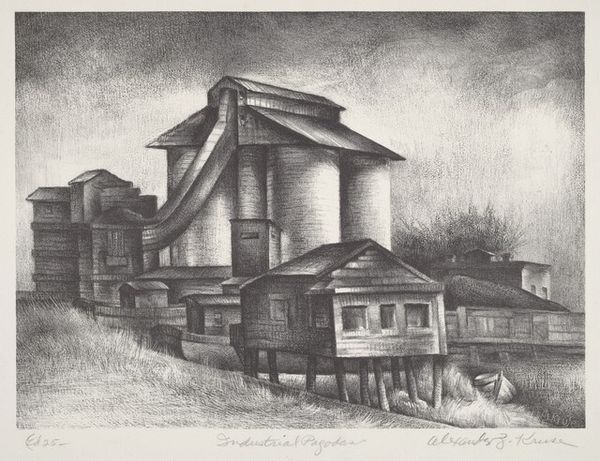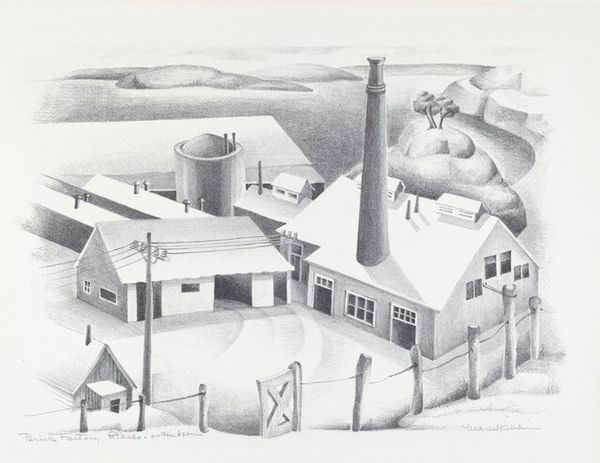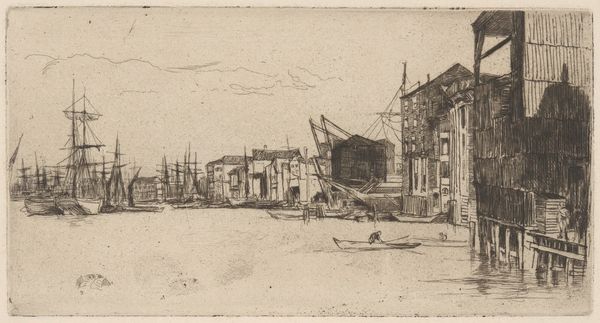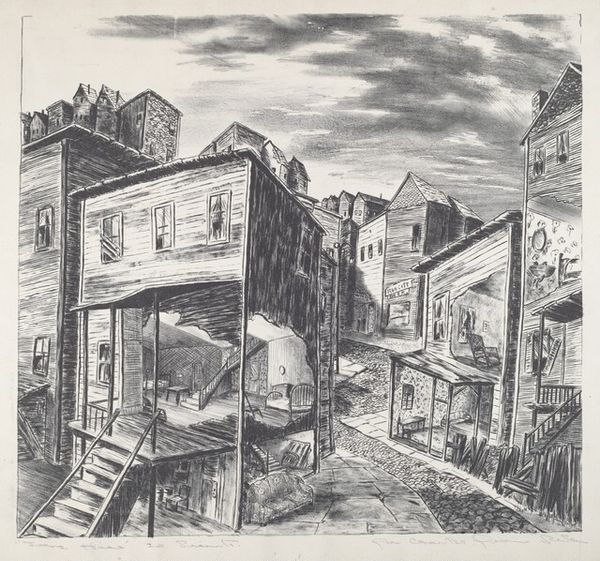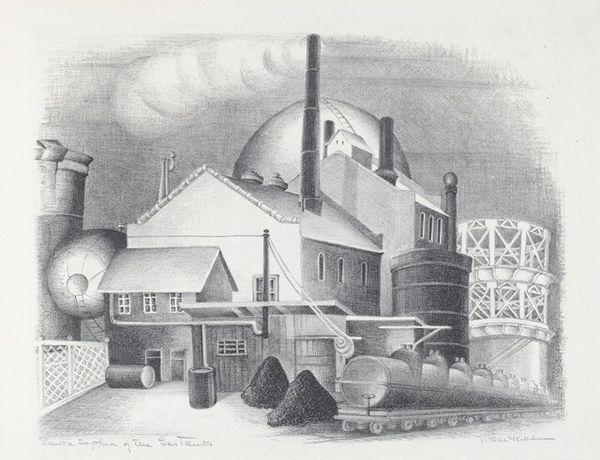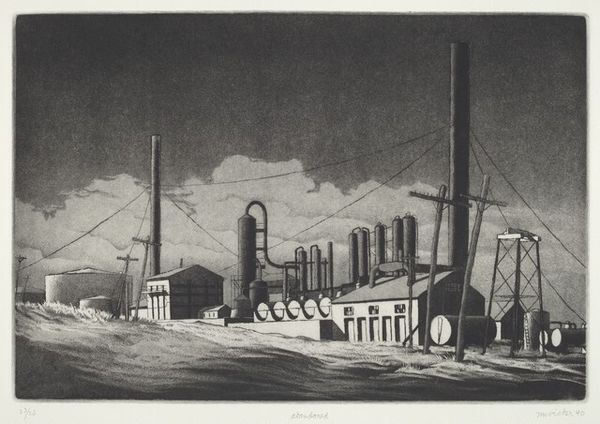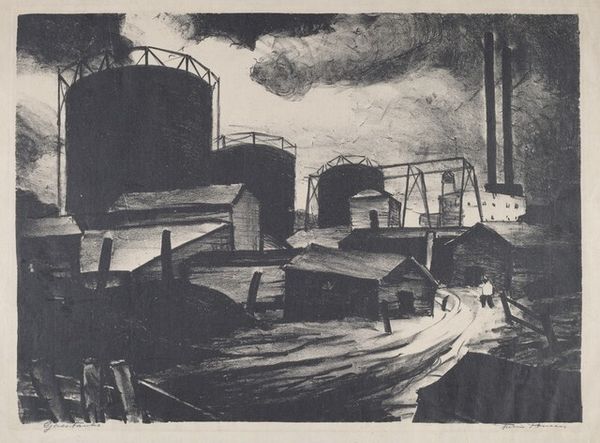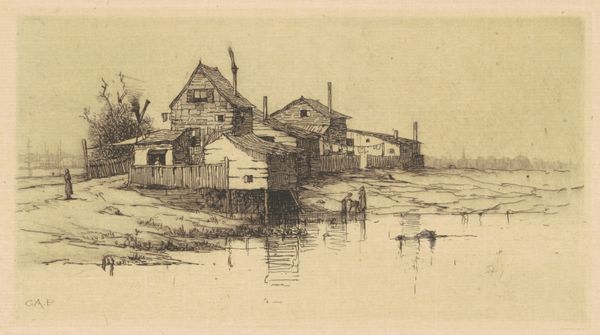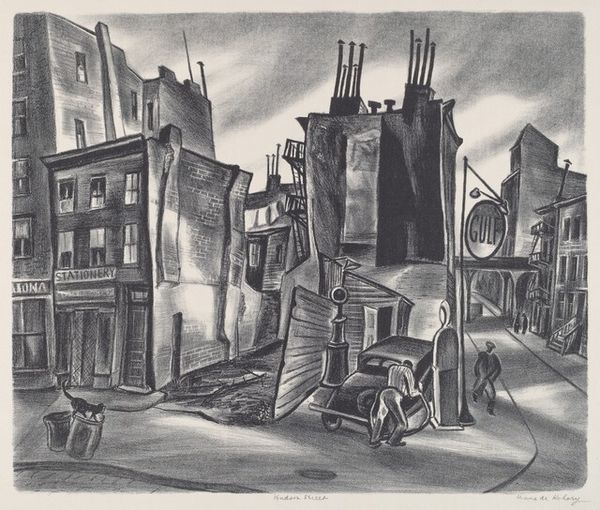
drawing, print, pencil
#
pencil drawn
#
drawing
# print
#
pencil sketch
#
charcoal drawing
#
pencil drawing
#
pencil
#
cityscape
#
pencil art
#
regionalism
#
realism
Dimensions: image: 305 x 267 mm paper: 337 x 305 mm
Copyright: National Gallery of Art: CC0 1.0
Editor: So, here we have Charles Bowling's "Industrial Encroachment," from 1939. It looks like a print made from a pencil drawing, depicting houses being dwarfed by industrial buildings. There's a real sense of… vulnerability, I guess, in the face of this overwhelming industry. What do you see in this piece? Curator: I see a potent visual commentary on the social upheaval of the late 1930s. Bowling uses a stark realist style to capture the tension between rural communities and the burgeoning industrial landscape. Notice how the artist contrasts the delicate details of the houses with the blocky, imposing factory. What do you think that contrast is meant to evoke? Editor: Maybe it's highlighting the power imbalance? The homes look fragile, temporary, compared to the solid permanence of the factories. Like they could be swept away. Curator: Precisely. It’s vital to understand that "Regionalism," as seen here, was not merely about depicting a place; it was about engaging with critical social issues. Consider the impact of industrialization on working-class families, the environment, and traditional ways of life. How does the absence of human figures contribute to this narrative? Editor: It’s like… the houses are left to fend for themselves. Abandoned. And without people, the landscape itself becomes the main character, telling a story of struggle and change. It makes you wonder about the people displaced by industrialization. Curator: Absolutely. It compels us to confront uncomfortable truths about progress and its discontents, highlighting who benefits and who pays the price. Think about the legacy of this kind of encroachment today, in relation to issues of environmental justice and the uneven distribution of resources. Editor: This has definitely given me a deeper appreciation of how art can reflect and critique societal shifts. Curator: Agreed, seeing this artwork not only highlights history but also invites conversations about contemporary realities, reminding us to interrogate the impact of progress on marginalized communities.
Comments
No comments
Be the first to comment and join the conversation on the ultimate creative platform.

